The Art of John Ferneley
John Ferneley was born on 18 May 1782 at Thrussington, Leicestershire. By the time of his death in Melton Mowbray in 1860, he was regarded as one of the great British animal painters, specialising in horses, prize sheep and cattle. He opened his studio in Melton Mowbray which was fast becoming a centre for fashionable country sports particularly fox hunting. Painting in Melton during the hunting season he also toured around the great estates of England and Ireland, painting landowners' horses, cattle, sheep and hounds. His work became much sought after and his patrons included members of British and European Royal families and personalities such as Beau Brummel and the Count d'Orsay.
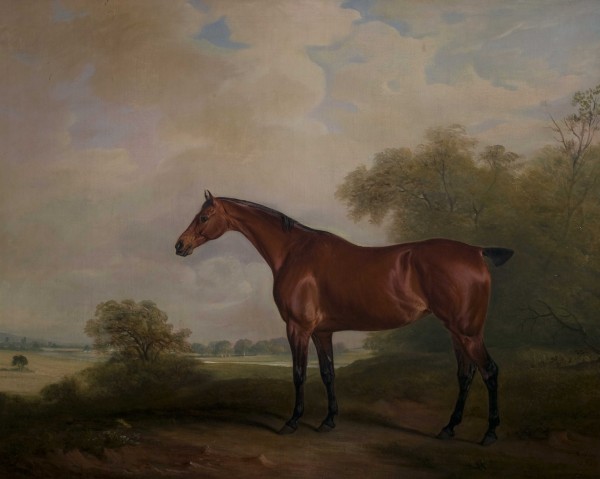
Mr Greene’s Bay Mare
The cream of British sportsmen came to Melton with their horses in the winter and Ferneley painted them in his studio and set them in the Leicestershire landscape as their backdrop. In the spring and summer he travelled to the estates of these huntsmen and other clients, painting their hunters at pasture, their livestock, servants and families. ‘Mr Greene’s Bay Mare’ is typical of Ferneley’s high quality equestrian paintings and is regarded as one of the finest of his works in the collection.

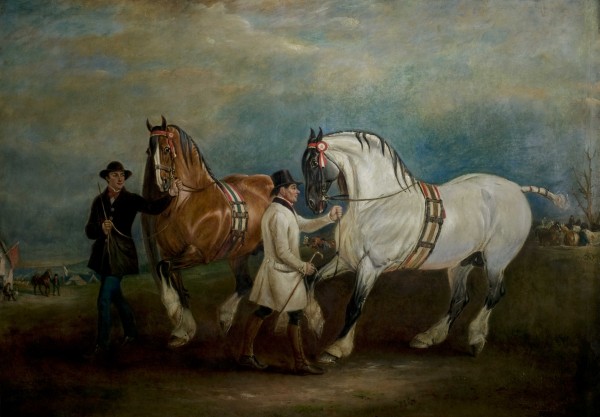
Carthorses with Grooms, 1856
Painted four years before his death in 1860, ‘Carthorses’ includes the elements of Ferneley’s successful animal paintings; depictions of the animals themselves and their tack, their grooms, a landscape with activity in the distance and his signature 'blasted' tree which appears in many of his paintings.

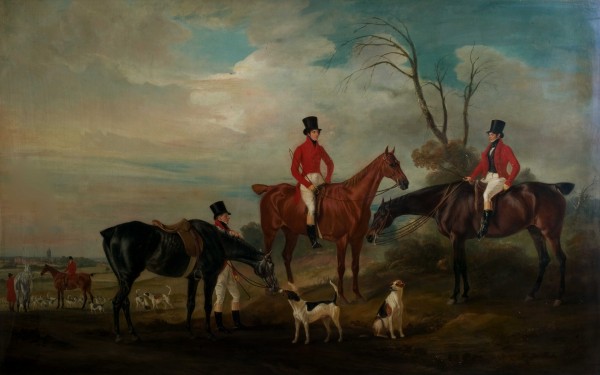
John, Henry and Francis Grant at Melton, 1823
This is one of Ferneley’s best and most famous group portraits and fox hunting scenes.
The painting shows the three Scottish Grant brothers, some of the leading lights of the Meltonians with hunters and hounds above the town, with the distinctive tower of St Mary’s church on the horizon. Francis Grant became one of Ferneley's pupils and a famous portrait artist in his own right. He lived in Melton for most of his life and also had a fashionable studio in London where he captured the likenesses of many famous Victorians.
Francis Grant studied painting with Ferneley who helped him with the painting of horses while Grant in return helped with figure painting. In this way they collaborated on a number of paintings. Grant became a leading society portraitist and painted the celebrated ‘Melton Hunt’ (Breakfast) in 1839.

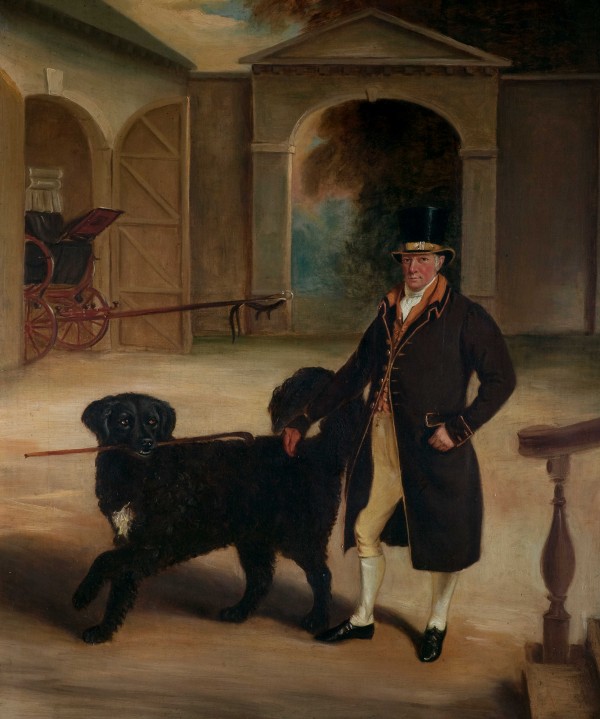
Mr Pare’s Coachman and his Newfoundland Dog, 1823
One of Ferneley’s portraits of servants and household staff that he would have painted during his spring and summer tours of client’s estates. We don't know the name of Mr Pare's coachman but he must have been a valued and trusted member of staff to have his portrait requested by his master. He is shown in the coachyard of Mr Pare's house with one of the carriages appearing at the open door of the coach house. Standing next to him is a Newfoundland dog.

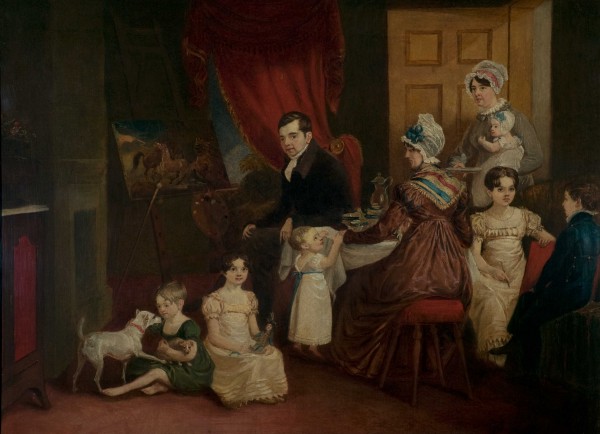
Portrait of the Artist and his Family in his Studio
This self portrait of Ferneley and his family was painted in the 1820s (probably between 1822 and 1828 by the apparent ages of the children) in the artist's studio at Elgin Lodge in Melton Mowbray.
It shows John and his wife Sarah (‘Sally’) with their children Reuben, Mary Sarah, William Reynolds, Sarah, John Jnr and the baby Claude Lorraine in the arms of one of the family’s servants. John is at his easel painting a spirited pair of horses in a storm.
This painting is currently on loan to the RWA in Bristol for their Me, Myself and I self portraits exhibition until 19 June 2022.

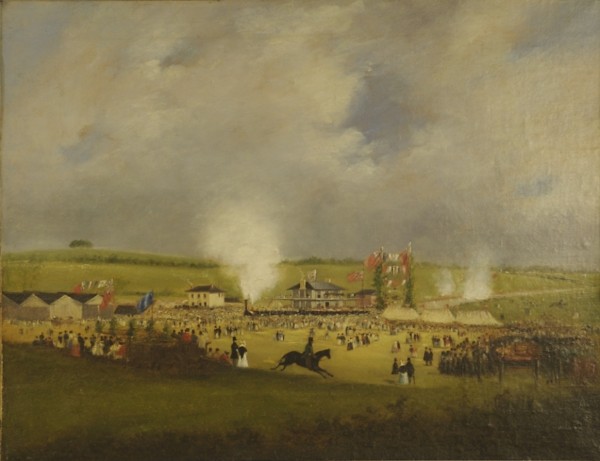
Opening of the Leicester and Swannington Railway (The Arrival of the First train at Bagworth, 17th July 1832)
The 1830s and 1840s were a period of change in the English countryside, the building of railways for industry and passengers created new scars across the landscape. Ferneley commemorated the spread of the new railways into North West Leicestershire with this painting from 1832.
When the section of railway between Leicester and Bagworth Colliery was completed it was possible to run trains to transport coal and passengers. Ferneley's view shows the arrival of the first train and the marquees which were set up for the celebratory dinner. The navvies who built the railway are being treated to an ox-roast, and no doubt to large quantities of beer!

The collection of John Ferneley Snr's oil paintings, drawings, watercolours and prints are an important group within the Leicestershire museum collections.
They reflect the people, places and pursuits of our county at a time of change; the hey-day of Melton and the Shires as a centre for fox hunting; the interest in agricultural development, the improvement of prize winning stock and the arrival of the industrial steam age in the shape of railways.
The pictures show a way of life in the countryside and market towns that would be transformed by the symbolic arrival of the first train on the Leicester and Swannington Railway.
The railways would bring Melton within easy reach of London and a new generation of the wealthy would come and stable their hunters in the town. Ferneley would continue to paint them; working until his last days and completing his final commission aged 79.
Modest to the end of his days Ferneley's signature was done very delicately with a pin head in the wet paint and often hidden on a fence, stable door or in an unexpected corner of the painting and even then many of his paintings remain unsigned.
The collections also include works by members of his family such as his sons Claude Lorraine and John Ferneley Jnr. Unfortunately paintings by his daughter Sarah are not yet represented in the collection.
